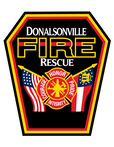Fire & Rescue Training Page
This page is used as a training resource.
|
Clearing a Flooded Saw
THIS IS ONE OF THOSE TOPICS THAT USUALLY GENERATES MANY DIFFERENT OPINIONS DUE TO PERSONAL EXPERIENCES. ANYONE THAT HAS BEEN AROUND SMALL ENGINES, OR ENJOYS WORKING ON 2-STROKE MOTORS WILL USUALLY BE SOMEWHERE ALONG THE LINES OF WHAT WE ARE GOING TO SUGGEST. WITH THAT SAID IF YOU HAVE DIFFERENT IDEAS OR ANOTHER WAY THAT IS TRIED AND TRUE FOR YOU, THEN YOU ARE WELCOME TO THROW IT IN HERE FOR EVERYONE TO DISCUSS. Troubleshooting a flooded saw in the field could make or break whatever task you have been assigned to. We all know that if the saws are not checked, ran and maintained it becomes very easy for them to flood from the constant bumping around that happens while driving around town. If they have started to flood you will notice the blue smoke that burns off in the first 5 seconds or so of getting them fired up. There are many different scenarios of when and how the saw may flood. One very common way is operator error. This can happen when someone initially attempts to start the saw but goes through the wrong procedures. Every saw starts with just a little different touch. One of the best ways to know each of your saws is when you start them in the mornings. You begin to pick up on the little differences of each one. Some may need choked longer, some may need a quick half choke, others may be a one pull start if your quick on the choke. Either way we should know what is normal and what is not. For the sake of this scenario we will say that the saw was flooded by starting it wrong. So the saw is cold and we have cycled it enough times with no spark that it is successfully flooded. What’s next? This is where our troubleshooting method comes in, we must have an aggressive way to clear the saw in a timely manner or else it is out of service. We know time will correct floods eventually but that is what we don’t have. We have all heard pull the plug out and let it air, which is fine if we are at the station and not in need of a working saw. Here is a quick tried and true way that works with a great success rate when you need to clear a flooded saw immediately. A solid understanding on how the choke and fuel system works will only increase your success rate with this tactic. 1st- we recognized the problem (flooding) and we switch to our troubleshooting start. 2nd-We place the ignition, if present in the on position enabling a spark. (This will be one of the points that I am sure will be debated…but hang with us) 3rd- Next we want the choke open/off, this allows the maximum amount of air to flow through the carburetor, which is key to clearing out the saw. 4th- You will squeeze and hold the throttle which causes our saw to be “wide open”. This is the second step in having the maximum amount of air with the least amount of fuel coming through the saw. Don’t be concerned that your dumping fuel in while the throttle is open, because your not. The saw will not effectively start pulling the full fuel mixture until the engine is running full speed. This is why we get maximum air without max fuel. 5th- With the choke and throttle wide open you want to grab on to the pull cord and cycle the saw quickly about 8 times. Typically this will effectively clear the saw enough that we can focus on starting it. This brings us to the reason of why we like to leave the ignition on. Many times you may get a “hiccup” out of the saw and be able to get it running quickly after you cycle it. If not we move to our next step. Now that the saw is cleared you will move into starting operations as close to normal as possible. These steps can vary slightly based on what you hear and feel with the saw. Put the choke back to the on/closed position and give it a few pulls, maybe move into a half choke based on what you hear, and then most of the time you will have your saw started. Make sure you are practiced and comfortable with these steps so it becomes routine when you have to do it on a real scene. That rare instance will always exist where the saw is just not going to start that day for many unknown reasons. However this technique, if done properly will get your flooded saw running again almost every time.
0 Comments
Leave a Reply. |
DFR. Archives
July 2024
Categories
All
|
© Copyright 2024-2025 City of Donalsonville Fire Rescue Department
|
Connect with Us |
